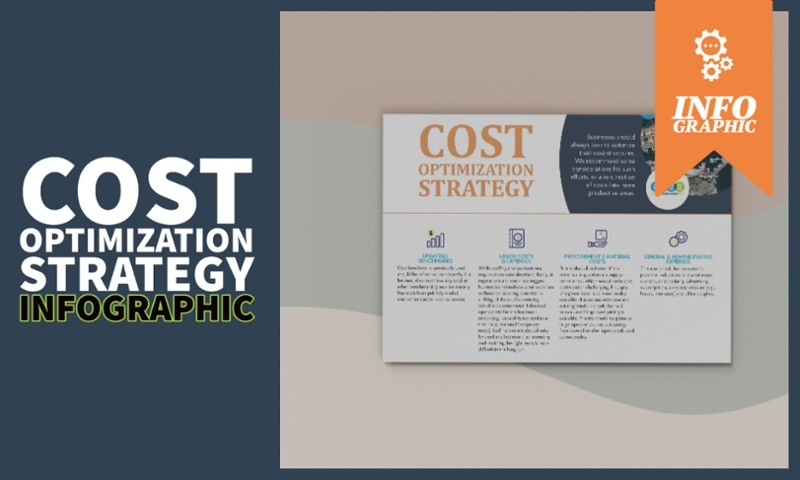While businesses should always look to optimize their cost structures, the COVID-19 environment presents unique challenges. Many businesses have likely addressed some perceived low-hanging fruit already as an offset to lower sales/revenues resulting from overall decreased activity. Below we discuss some considerations to reexamine potential cost optimization opportunities or some redirection of costs into more productive areas.
Updating Benchmarks
With 6+ months of COVID-impacted business already in the books, any cost benchmarks previously used should be refreshed. If a business does not have any local or other benchmarking sources already, financials from publicly traded companies can be used as proxies, as they have all reported one fully-COVID-impacted quarter of results (e.g., 3-months ending in June). Some examples that can be considered are Chipotle for restaurants, ViacomCBS for entertainment businesses, and Lockheed Martin for aerospace/defense companies. While some cost/expense categories from these companies may be deemed to not apply in certain situations, other companies or averages across a sector/industry can be used for categories such as those mentioned below.
Labor Expense and Cost Optimization
Local directives in response to COVID have required many businesses to adjust staffing levels. Many storefront businesses, for example, have furloughed workers as customer traffic for non-essential businesses is restricted. Office-based businesses like Salesforce have mostly shifted to remote work, but they have not been immune to furloughs/layoffs depending on their situations. Some businesses like transport company C.H. Robinson have even automated some work recently, but that option requires necessary investments with sufficient lead time. While staffing change decisions require more considerations than just regulations and costs, we would suggest businesses not reduce labor expenses without considering potential re-shifting of duties in this COVID environment. As an example, a business can consider shifting an event planner’s duties to the marketing team who may need additional horsepower to address revised customer outreach tactics. On the Finance side, a T&E specialist may be shifted to A/P or Billing which may be more pertinent at this time. Whether to outsource finance and accounting can also be considered if deemed appropriate for the business’s needs (e.g., capability not available internally, seasonal/temporary need, etc.). We believe staff reductions should only be used as a last resort, as recruiting and retaining the right team is more difficult in the long run. While many hope for a “return to normal,” businesses should consider any duty/staffing changes to potentially stay in place for the foreseeable future due to the pandemic.
Procurement & Material Costs
In the current environment, all businesses should explore optimizing their procurement costs (if applicable). First, it should be known if the materials in question are supply-constrained, which would make cost optimization challenging. If supply of a given material is more readily available, discussions with new and existing vendors should be held to evaluate if improved pricing is available. The viability of all vendors (and thus continued supply) should be considered as well, as many businesses are feeling the impact from constrained activity resulting from COVID. Priority should be given to large inputs of course, but savings from several smaller inputs could add up noticeably. A related component to evaluate for optimization is transport/freight costs. Lower fuel costs may provide an impetus to request a decrease in this area, but higher B2C demand related to online shopping (UPS reported a +17% increase in US sales for the quarter ending June 2020) and B2B transportation constraints cited by some like DHL may challenge this approach.
Selling Expenses
Selling expenses for many businesses have declined in the current environment as live sales meetings and events/conferences have been postponed indefinitely. A consideration for those expense savings should be a redirection to remote activity (Zoom meeting subscriptions, etc.) and sales commissions (probably against refreshed quotas/goals). This should help keep sales teams motivated and shore up sales as much as possible. With most sales meetings now virtual, leveraging existing resources to cover more territory should be explored as an additional tactic to shore up sales.
G&A Expenses
G&A should provide more straight-forward opportunities for expense optimization. This area should be reviewed for potential reductions in discretionary spend such as training, advertising, subscriptions, company vehicles (leases/insurance), and office supplies. Office IT expenses may also be explored if variable on data usage. Some expense types will naturally decline such as utilities and cleaning expenses given office closures.
Summary
The overall goal of cost & expense optimization should not be elimination, but how to invest the business’s resources most effectively in this new environment. While an initial reaction was likely to cut all costs deemed as unnecessary immediately, businesses should explore expense and cost optimization in a methodical manner to ensure they are not cutting too deep or in areas that could hamper the company’s readiness to rebound.
If your business is looking for help with cost and expense optimization, or if you are thinking about bringing in financial or accounting consultants, then contact us! We offer outside expertise with industry best practices and would be happy to help you define your needs and offer advice on next steps. You can also download our free infographic for a handy guide to cost optimization strategy:

About the Author
Marco has 17 years of Finance and Consulting experience. His work spans various industries including technology, entertainment, telecommunications, consumer products, financial services, and healthcare. Marco has expertise in Financial Planning & Analysis (budgeting, forecasting, and reporting), Strategic Planning, project management, financial modeling, merger integration, and valuation. Prior to joining 8020 Consulting, Marco held Finance and Strategy positions at Epson America and also worked for various firms including Deloitte Consulting, Paramount Pictures, Grupo Modelo, Cricket Communications, UBS, and Goldman Sachs. Marco holds a B.A. in Economics from Brandeis University, and an MBA from the UCLA Anderson School of Management.
